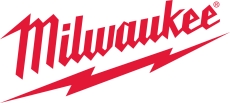As any construction worker can tell you, there’s a difference between sound and noise. “Sound” is a vibration that you can hear. “Noise” is excessive sound that causes injuries, especially when it relentlessly screeches, pounds, echoes, and clatters across a jobsite.
Hearing loss from excessive noise is the most common work-related injury in the US, according to the Centers for Disease Control. The loss is permanent. Surgery and hearing aids can’t restore full hearing after injuries damage the hairs and nerve endings in the inner ear.
The most recent results from a National Institute for Occupational Safety and Health (NIOSH) database study indicated that construction workers have the highest prevalence of hearing loss of any industry, outside of mining. This hearing loss continues to increase with age. Findings from the Building Trades National Medical Screening Program (BTMed), which examined construction workers with an average of more than 20 years of occupational exposure, show that over 58% of construction workers examined had hearing impairment.1
About 22 million workers are exposed to hazardous noise levels each year, according to NIOSH. Hearing damage can occur with long-term exposure to loud noises, or from an ear-splitting blast of noise that can burst an eardrum. Individuals might not notice the effects of cumulative exposure to noise over long periods of time. Noise that is just 2 to 3 decibels louder than normal can be easy for individuals to accept. Often, it isn’t noticed in time to prevent hearing loss.
In daily life, decibel levels range upward from leaves rustling at 20 decibels to dangerous levels, as shown on the Decibel Sound Scale chart. The Occupational Safety and Health Administration (OSHA) requires employers to implement a worksite hearing conservation program when noise exposure is at or above 85 decibels averaged over 8 working hours.3
In addition to hearing loss, loud noise also can create physical and psychological stress; some studies link it to high blood pressure, cholesterol, and depression. Noise also affects concentration and sleep, which reduces productivity.
Solutions to prevent occupational hearing loss include using quieter machines, such as battery-powered equipment that operates at lower decibels. Other tactics: Isolate or encase the noise source, limit worker exposure, and use Personal Protective Equipment (PPE).
Jobsite vibration risks
The risk of harm from vibration, for which there is no OSHA standard, depends on intensity, frequency, and length of exposure. While excessive sound vibrations can injure the ears through noise, other vibrations affect the entire body. Whole-body vibration can bring symptoms like back pain or shakiness, experienced after a long car or boat trip, or after operating heavy equipment, including bulldozers and backhoes.



max_efficiency_thumb.png?itok=_OhRZeS3)


Talk to Us!
Leave a reply
Your email address will not be published. Required fields are marked *